Ipamorelin 5mg
Ipamorelin 5mg
Ipamorelin stimulates the release of growth hormone, leading to increased muscle mass and strength, enhanced fat loss, improved recovery and healing, better sleep quality, and anti-aging effects, making it beneficial for overall physical performance and health. (PMID: 9849822, PMID: 11735244, PMID: 15506422)
Ipamorelin Research Topics:
-
Muscle Growth and Strength:
Ipamorelin stimulates the release of growth hormone, which can lead to increased muscle mass and strength. This makes it beneficial for individuals looking to improve their physical performance and body composition. (PMID: 9849822)
-
Fat Loss:
The peptide promotes fat loss by enhancing the body’s natural fat-burning processes. This can support better metabolism and weight management. (PMID: 11735244)
-
Enhanced Recovery and Healing:
Growth hormones play a crucial role in recovery and healing. Ipamorelin can accelerate recovery from injuries and intense physical activities, making it useful for athletes and active individuals. (PMID: 9849822)
-
Improved Sleep Quality:
Anecdotal evidence suggests that Ipamorelin can enhance sleep quality, leading to better cognitive function, mood stabilization, and overall health. (PMID: 15506422)
-
Anti-Aging Effects:
The peptide has been associated with improved skin elasticity, collagen production, and other anti-aging effects due to its ability to increase growth hormone levels. (PMID: 9849822)
Structure

Peptide Sequence: Aib-His-D-2Nal-D-Phe-Lys
Molecular Formula: CHNO
Molecular Weight: 711.868 g/molPub
Chem CID: 9831659
CAS Number: 170851-70-4
Ipamorelin Research
1. Ipamorelin and Negative Corticosteroid Effects
Glucocorticoids, the class of corticosteroids commonly used to treat inflammation in conditions ranging from cancer to autoimmune disease, have a host of serious side effects that often limit their usefulness. Mitigating the side effects of glucocorticoids could provide for higher dosing of these medications and allow people to remain on them for longer periods of time, both of which could have positive benefits on morbidity and mortality. Ipamorelin has been shown, in several studies, to reduce or even reverse the side effects of glucocorticoid use.
2. Ipamorelin and Bone Health
One of the most profound problems associated with long-term glucocorticoid use is loss of bone density and subsequent risk of fracture. Current therapies include bisphosphonates, hormone therapies, and new monoclonal antibodies. All of these are effective treatments in their own right, but they also all have side effects, limited efficacy, or high cost. Ipamorelin, on the other hand, is relatively inexpensive to produce and has a very limited number of side effects. Studies in rats indicate that ipamorelin can completely stop bone loss due to corticosteroids and even leads to a four-fold increase in bone formation in rats exposed to these drugs [2]. Further studies indicate that ipamorelin also increases bone mineral density systemically, thereby increasing the strength of both existing bone and newly formed bone [3]. As an added bonus, ipamorelin helps to offset some of the other side effects of steroids, such as muscle wasting and increased visceral fat deposition.
3. Ipamorelin and Muscle Growth
There is evidence to suggest that GH and growth hormone secretagogues like ipamorelin may reduce the catabolic effects that glucocorticoids have on muscle. Research in rats given glucocorticoids shows a decrease in nitrogen wasting in the liver and improved nitrogen balance following administration of ipamorelin [4]. Muscle wasting is one of the primary side effects associated with glucocorticoid use and a common treatment-limiting side effect. The ability to counteract muscle catabolism and bone-density loss with a single drug could be hugely beneficial to patients who require glucocorticoids.
4. Ipamorelin and Diabetes
Research in diabetic rats has revealed that ipamorelin can potentiate insulin release. This effect is most likely a result of indirect stimulation of the calcium channel found on pancreatic islet cells where insulin is made and stored [5]. Ipamorelin’s actions on the pancreas may help us better understand the functional limitations of type 2 diabetes and lead to the development of novel therapeutics or even preventative measures.
5. Studied for Treatment of Post-Operative Ileus
Post-operative ileus (POI) is a common condition that follows certain types of surgery but is particularly common following abdominal surgery. The condition is characterized by an inability of individuals to take oral nutrition because the GI system ceases to function. It can be characterized by pain, but the primary problem with POI is that it slows discharge from the hospital and lengthens overall recovery time.
Ipamorelin has been investigated in several proof-of-concept clinical trials to determine if administration of the peptide can reduce POI. The research suggests that ipamorelin does shorten the time to the first meal by approximately 12 hours [6],[7]. Unfortunately, and despite early limited success, the trials were abandoned when the company conducting them decided that efficacy was not high enough to create a viable product. There is hope that ongoing research can boost efficacy or that research into combination therapies that include ipamorelin can find a synergistic effect with other compounds that will render the therapy more effective.
a. The amount of radiolabeled food remaining in the stomach is lower in rats with POI after ipamorelin administration, even when compared to rats not suffering from POI.
b. The geometric location of the food is similar to rats without POI when rats with POI are given ipamorelin.
c. Location of radiolabeled food is more distal in the GI tract, and similar to rats without POI after Ipamorelin is administered.
6. Ipamorelin as Ghrelin Receptor Probe
Ipamorelin is a selective ghrelin receptor agonist and binds strongly to the ghrelin receptor. The ghrelin receptor is known to increase in abundance in certain types of cancer (e.g. human carcinomas) and heart failure. Given these facts, researchers recently speculated that ipamorelin could be used as a probe in positron emission tomography (PET) as an aid to diagnosis. Basic in vitro studies have demonstrated the feasibility of this approach and have confirmed that ipamorelin [8], which is easy to synthesize in a lab, could theoretically be used as a PET probe. The next step is to test the probe to determine how well it functions in vivo and to develop standards for interpreting PET studies done with it.
Ipamorelin Is Neglected in Research
Though ipamorelin does not have orphan-drug status at this time, it is still a neglected drug in research settings. Despite promising early studies, interest in ipamorelin has waned following the decision not to pursue it as a treatment for post-operative ileus. Ipamorelin has a number of benefits to offer, not just as therapeutic, but as a tool for better understanding a number of disease states and their physiologic impacts. Ipamorelin will likely be of interest in research again, once someone jump-starts the field with new data and cutting-edge insight into the benefits of this unique peptide.
Ipamorelin exhibits moderate side effects and low oral and excellent subcutaneous bioavailability in mice. Per kg, dosage in mice does not scale to humans. Ipamorelin for sale at Life Link Research is limited to educational and scientific research only, not for human consumption. Only buy Ipamorelin if you are a licensed researcher.
Article Author
The above literature was researched, edited and organized by Dr. Logan, M.D. Dr. Logan holds a doctorate degree from Case Western Reserve University School of Medicine and a B.S. in molecular biology.
Scientific Journal Author
David E. Beck, MD, co-author of “Prospective, randomized, controlled, proof-of-concept study of the Ghrelin mimetic ipamorelin for the management of postoperative ileus in bowel resection patients” specializes in colon and rectal surgery.
David E. Beck, MD is being referenced as one of the leading scientists involved in the research and development of Ipamorelin. In no way is this doctor/scientist endorsing or advocating the purchase, sale, or use of this product for any reason. There is no affiliation or relationship, implied or otherwise, between Life Link Research and this doctor. The purpose of citing the doctor is to acknowledge, recognize, and credit the exhaustive research and development efforts conducted by the scientists studying this peptide. David E. Beck, MD is listed in [6] under the referenced citations.
Referenced Citations
- K. Raun et al., “Ipamorelin, the first selective growth hormone secretagogue,” Eur. J. Endocrinol., vol. 139, no. 5, pp. 552–561, Nov. 1998. [PubMed]
- N. B. Andersen, K. Malmlöf, P. B. Johansen, T. T. Andreassen, G. Ørtoft, and H. Oxlund, “The growth hormone secretagogue ipamorelin counteracts the glucocorticoid-induced decrease in bone formation of adult rats,” Growth Horm. IGF Res. Off. J. Growth Horm. Res. Soc. Int. IGF Res. Soc., vol. 11,no. 5, pp. 266–272, Oct. 2001. [PubMed]
- J. Svensson et al., “The GH secretagogues ipamorelin and GH-releasing peptide-6 increase bone mineral content in adult female rats,” J.Endocrinol., vol. 165, no. 3, pp. 569–577, Jun. 2000. [PubMed]
- N. K. Aagaard et al., “Growth hormone and growth hormone secretagogue effects on nitrogen balance and urea synthesis in steroid-treated rats,” Growth Horm. IGF Res. Off. J. Growth Horm. Res. Soc. Int. IGF Res. Soc., vol. 19, no. 5, pp. 426–431, Oct. 2009. [PubMed]
- E. Adeghate and A. S. Ponery, “Mechanism of ipamorelin-evoked insulin release from the pancreas of normal and diabetic rats,” Neuro Endocrinol.Lett., vol. 25, no. 6, pp. 403–406, Dec. 2004. [PubMed]
- D. E. Beck, W. B. Sweeney, M. D. McCarter, and Ipamorelin 201 Study Group, “Prospective, randomized, controlled, proof-of-concept study of the ghrelin mimetic ipamorelin for the management of postoperative ileus in bowel resection patients,” Int. J. Colorectal Dis., vol. 29, no. 12, pp. 1527–1534, Dec. 2014. [PubMed]
- B. Greenwood-Van Meerveld, K. Tyler, E. Mohammadi, and C. Pietra, “Efficacy of ipamorelin, a ghrelin mimetic, on gastric dysmotility in a rodent model of postoperative ileus,” J. Exp. Pharmacol., vol. 4, pp. 149–155, Oct. 2012. [PubMed]
- M. M. Fowkes, T. Lalonde, L. Yu, S. Dhanvantari, M. S. Kovacs, and L. G. Luyt, “Peptidomimetic growth hormone secretagogue derivatives for positron emission tomography imaging of the ghrelin receptor,” Eur. J. Med. Chem., vol. 157, pp. 1500–1511, Sep. 2018. [Science Direct]
$44.00
Description
Ipamorelin stimulates the release of growth hormone, leading to increased muscle mass and strength, enhanced fat loss, improved recovery and healing, better sleep quality, and anti-aging effects, making it beneficial for overall physical performance and health. (PMID: 9849822, PMID: 11735244, PMID: 15506422)
Ipamorelin Research Topics:
-
Muscle Growth and Strength:
Ipamorelin stimulates the release of growth hormone, which can lead to increased muscle mass and strength. This makes it beneficial for individuals looking to improve their physical performance and body composition. (PMID: 9849822)
-
Fat Loss:
The peptide promotes fat loss by enhancing the body’s natural fat-burning processes. This can support better metabolism and weight management. (PMID: 11735244)
-
Enhanced Recovery and Healing:
Growth hormones play a crucial role in recovery and healing. Ipamorelin can accelerate recovery from injuries and intense physical activities, making it useful for athletes and active individuals. (PMID: 9849822)
-
Improved Sleep Quality:
Anecdotal evidence suggests that Ipamorelin can enhance sleep quality, leading to better cognitive function, mood stabilization, and overall health. (PMID: 15506422)
-
Anti-Aging Effects:
The peptide has been associated with improved skin elasticity, collagen production, and other anti-aging effects due to its ability to increase growth hormone levels. (PMID: 9849822)
Structure

Peptide Sequence: Aib-His-D-2Nal-D-Phe-Lys
Molecular Formula: CHNO
Molecular Weight: 711.868 g/molPub
Chem CID: 9831659
CAS Number: 170851-70-4
Ipamorelin Research
1. Ipamorelin and Negative Corticosteroid Effects
Glucocorticoids, the class of corticosteroids commonly used to treat inflammation in conditions ranging from cancer to autoimmune disease, have a host of serious side effects that often limit their usefulness. Mitigating the side effects of glucocorticoids could provide for higher dosing of these medications and allow people to remain on them for longer periods of time, both of which could have positive benefits on morbidity and mortality. Ipamorelin has been shown, in several studies, to reduce or even reverse the side effects of glucocorticoid use.
2. Ipamorelin and Bone Health
One of the most profound problems associated with long-term glucocorticoid use is loss of bone density and subsequent risk of fracture. Current therapies include bisphosphonates, hormone therapies, and new monoclonal antibodies. All of these are effective treatments in their own right, but they also all have side effects, limited efficacy, or high cost. Ipamorelin, on the other hand, is relatively inexpensive to produce and has a very limited number of side effects. Studies in rats indicate that ipamorelin can completely stop bone loss due to corticosteroids and even leads to a four-fold increase in bone formation in rats exposed to these drugs [2]. Further studies indicate that ipamorelin also increases bone mineral density systemically, thereby increasing the strength of both existing bone and newly formed bone [3]. As an added bonus, ipamorelin helps to offset some of the other side effects of steroids, such as muscle wasting and increased visceral fat deposition.
3. Ipamorelin and Muscle Growth
There is evidence to suggest that GH and growth hormone secretagogues like ipamorelin may reduce the catabolic effects that glucocorticoids have on muscle. Research in rats given glucocorticoids shows a decrease in nitrogen wasting in the liver and improved nitrogen balance following administration of ipamorelin [4]. Muscle wasting is one of the primary side effects associated with glucocorticoid use and a common treatment-limiting side effect. The ability to counteract muscle catabolism and bone-density loss with a single drug could be hugely beneficial to patients who require glucocorticoids.
4. Ipamorelin and Diabetes
Research in diabetic rats has revealed that ipamorelin can potentiate insulin release. This effect is most likely a result of indirect stimulation of the calcium channel found on pancreatic islet cells where insulin is made and stored [5]. Ipamorelin’s actions on the pancreas may help us better understand the functional limitations of type 2 diabetes and lead to the development of novel therapeutics or even preventative measures.
5. Studied for Treatment of Post-Operative Ileus
Post-operative ileus (POI) is a common condition that follows certain types of surgery but is particularly common following abdominal surgery. The condition is characterized by an inability of individuals to take oral nutrition because the GI system ceases to function. It can be characterized by pain, but the primary problem with POI is that it slows discharge from the hospital and lengthens overall recovery time.
Ipamorelin has been investigated in several proof-of-concept clinical trials to determine if administration of the peptide can reduce POI. The research suggests that ipamorelin does shorten the time to the first meal by approximately 12 hours [6],[7]. Unfortunately, and despite early limited success, the trials were abandoned when the company conducting them decided that efficacy was not high enough to create a viable product. There is hope that ongoing research can boost efficacy or that research into combination therapies that include ipamorelin can find a synergistic effect with other compounds that will render the therapy more effective.
a. The amount of radiolabeled food remaining in the stomach is lower in rats with POI after ipamorelin administration, even when compared to rats not suffering from POI.
b. The geometric location of the food is similar to rats without POI when rats with POI are given ipamorelin.
c. Location of radiolabeled food is more distal in the GI tract, and similar to rats without POI after Ipamorelin is administered.
6. Ipamorelin as Ghrelin Receptor Probe
Ipamorelin is a selective ghrelin receptor agonist and binds strongly to the ghrelin receptor. The ghrelin receptor is known to increase in abundance in certain types of cancer (e.g. human carcinomas) and heart failure. Given these facts, researchers recently speculated that ipamorelin could be used as a probe in positron emission tomography (PET) as an aid to diagnosis. Basic in vitro studies have demonstrated the feasibility of this approach and have confirmed that ipamorelin [8], which is easy to synthesize in a lab, could theoretically be used as a PET probe. The next step is to test the probe to determine how well it functions in vivo and to develop standards for interpreting PET studies done with it.
Ipamorelin Is Neglected in Research
Though ipamorelin does not have orphan-drug status at this time, it is still a neglected drug in research settings. Despite promising early studies, interest in ipamorelin has waned following the decision not to pursue it as a treatment for post-operative ileus. Ipamorelin has a number of benefits to offer, not just as therapeutic, but as a tool for better understanding a number of disease states and their physiologic impacts. Ipamorelin will likely be of interest in research again, once someone jump-starts the field with new data and cutting-edge insight into the benefits of this unique peptide.
Ipamorelin exhibits moderate side effects and low oral and excellent subcutaneous bioavailability in mice. Per kg, dosage in mice does not scale to humans. Ipamorelin for sale at Life Link Research is limited to educational and scientific research only, not for human consumption. Only buy Ipamorelin if you are a licensed researcher.
Article Author
The above literature was researched, edited and organized by Dr. Logan, M.D. Dr. Logan holds a doctorate degree from Case Western Reserve University School of Medicine and a B.S. in molecular biology.
Scientific Journal Author
David E. Beck, MD, co-author of “Prospective, randomized, controlled, proof-of-concept study of the Ghrelin mimetic ipamorelin for the management of postoperative ileus in bowel resection patients” specializes in colon and rectal surgery.
David E. Beck, MD is being referenced as one of the leading scientists involved in the research and development of Ipamorelin. In no way is this doctor/scientist endorsing or advocating the purchase, sale, or use of this product for any reason. There is no affiliation or relationship, implied or otherwise, between Life Link Research and this doctor. The purpose of citing the doctor is to acknowledge, recognize, and credit the exhaustive research and development efforts conducted by the scientists studying this peptide. David E. Beck, MD is listed in [6] under the referenced citations.
Referenced Citations
- K. Raun et al., “Ipamorelin, the first selective growth hormone secretagogue,” Eur. J. Endocrinol., vol. 139, no. 5, pp. 552–561, Nov. 1998. [PubMed]
- N. B. Andersen, K. Malmlöf, P. B. Johansen, T. T. Andreassen, G. Ørtoft, and H. Oxlund, “The growth hormone secretagogue ipamorelin counteracts the glucocorticoid-induced decrease in bone formation of adult rats,” Growth Horm. IGF Res. Off. J. Growth Horm. Res. Soc. Int. IGF Res. Soc., vol. 11,no. 5, pp. 266–272, Oct. 2001. [PubMed]
- J. Svensson et al., “The GH secretagogues ipamorelin and GH-releasing peptide-6 increase bone mineral content in adult female rats,” J.Endocrinol., vol. 165, no. 3, pp. 569–577, Jun. 2000. [PubMed]
- N. K. Aagaard et al., “Growth hormone and growth hormone secretagogue effects on nitrogen balance and urea synthesis in steroid-treated rats,” Growth Horm. IGF Res. Off. J. Growth Horm. Res. Soc. Int. IGF Res. Soc., vol. 19, no. 5, pp. 426–431, Oct. 2009. [PubMed]
- E. Adeghate and A. S. Ponery, “Mechanism of ipamorelin-evoked insulin release from the pancreas of normal and diabetic rats,” Neuro Endocrinol.Lett., vol. 25, no. 6, pp. 403–406, Dec. 2004. [PubMed]
- D. E. Beck, W. B. Sweeney, M. D. McCarter, and Ipamorelin 201 Study Group, “Prospective, randomized, controlled, proof-of-concept study of the ghrelin mimetic ipamorelin for the management of postoperative ileus in bowel resection patients,” Int. J. Colorectal Dis., vol. 29, no. 12, pp. 1527–1534, Dec. 2014. [PubMed]
- B. Greenwood-Van Meerveld, K. Tyler, E. Mohammadi, and C. Pietra, “Efficacy of ipamorelin, a ghrelin mimetic, on gastric dysmotility in a rodent model of postoperative ileus,” J. Exp. Pharmacol., vol. 4, pp. 149–155, Oct. 2012. [PubMed]
- M. M. Fowkes, T. Lalonde, L. Yu, S. Dhanvantari, M. S. Kovacs, and L. G. Luyt, “Peptidomimetic growth hormone secretagogue derivatives for positron emission tomography imaging of the ghrelin receptor,” Eur. J. Med. Chem., vol. 157, pp. 1500–1511, Sep. 2018. [Science Direct]


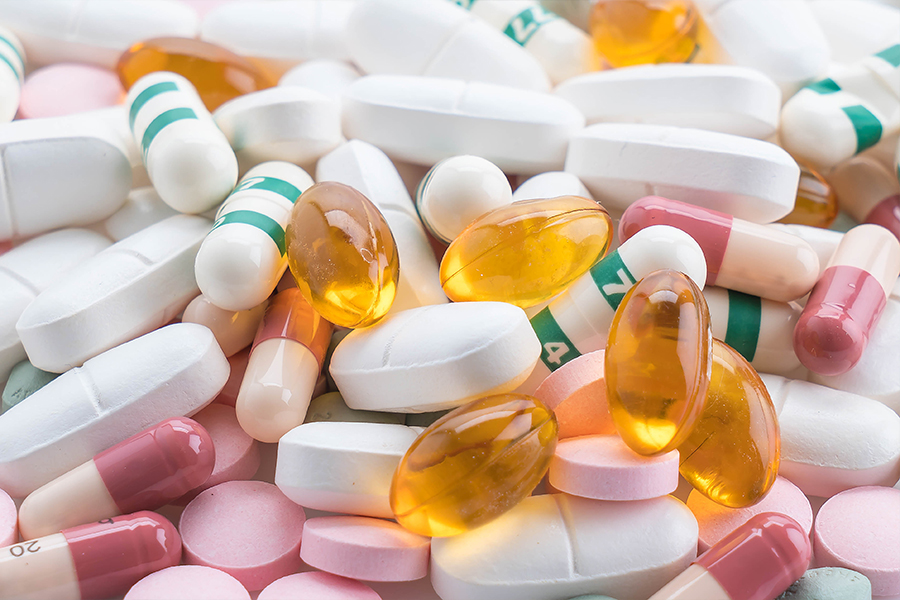

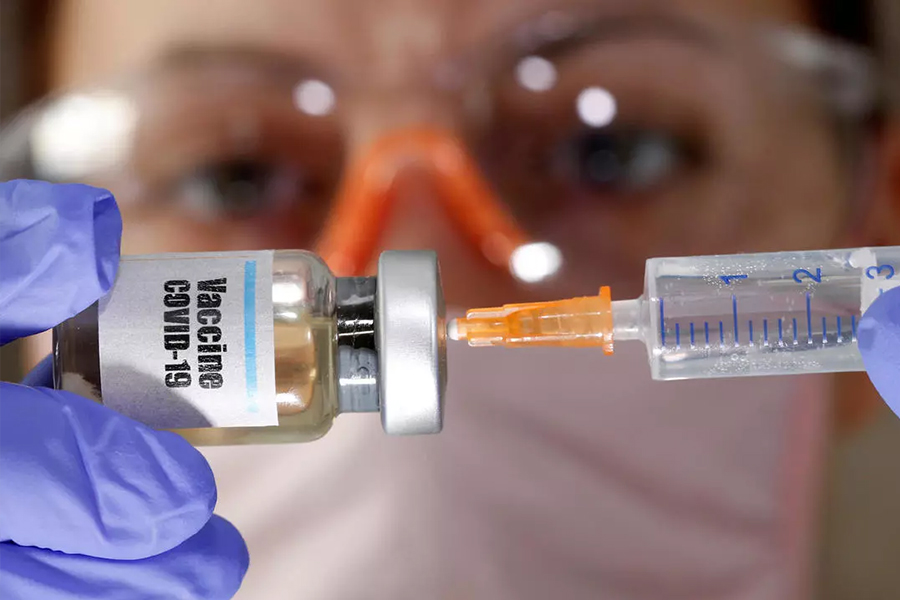


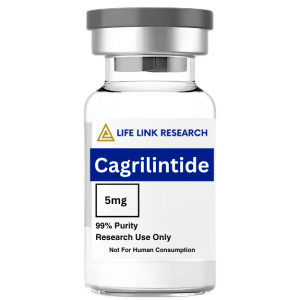
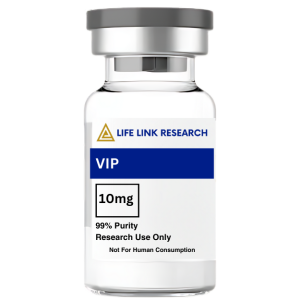
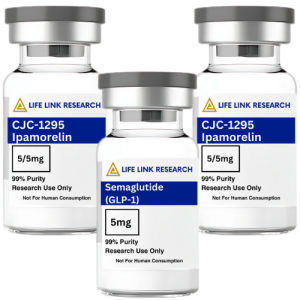
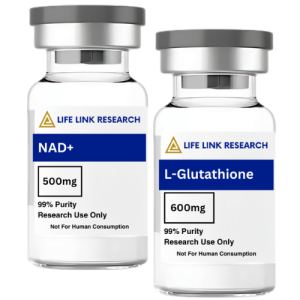
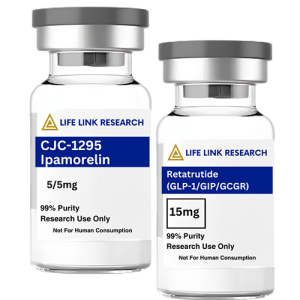
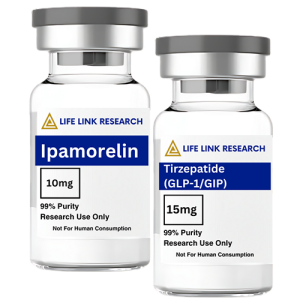


Reviews
There are no reviews yet.